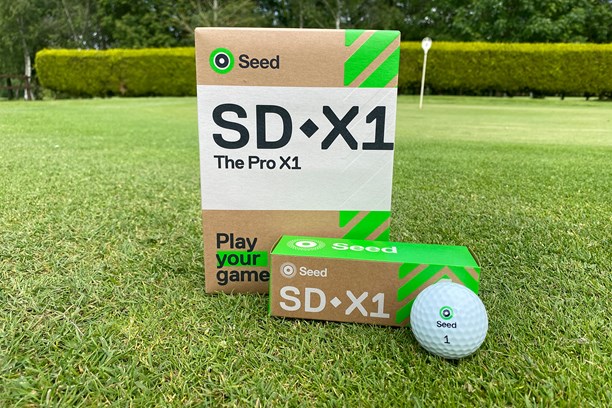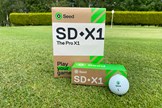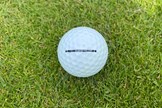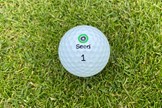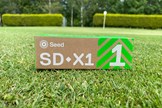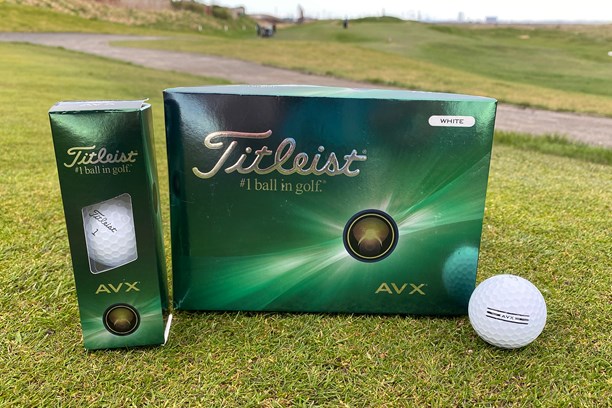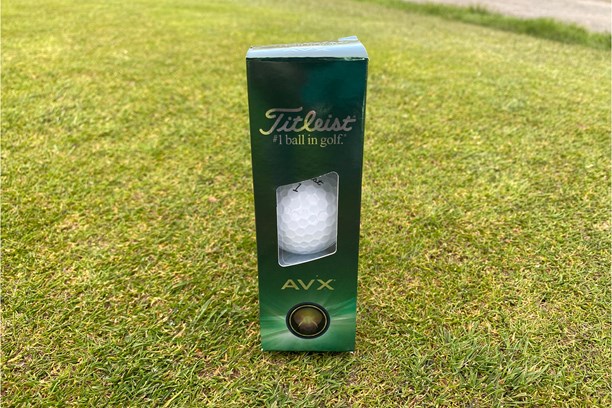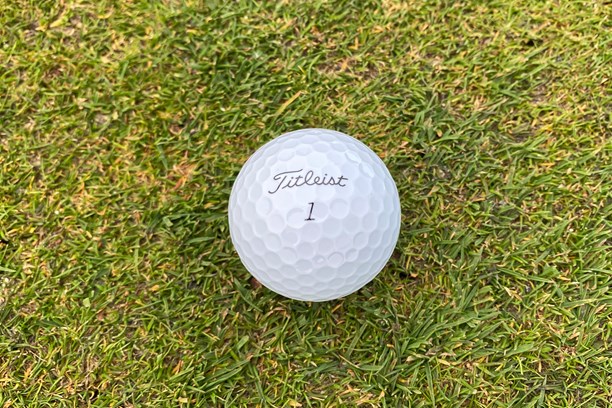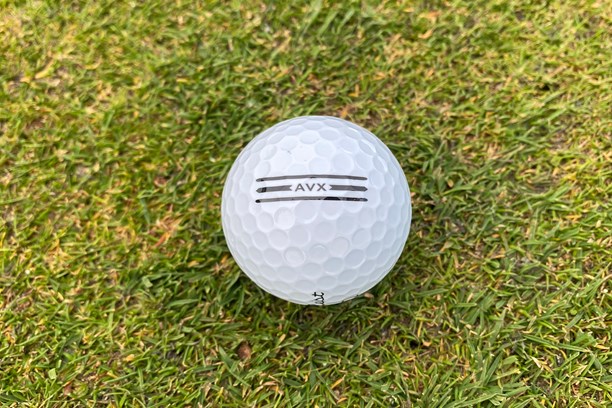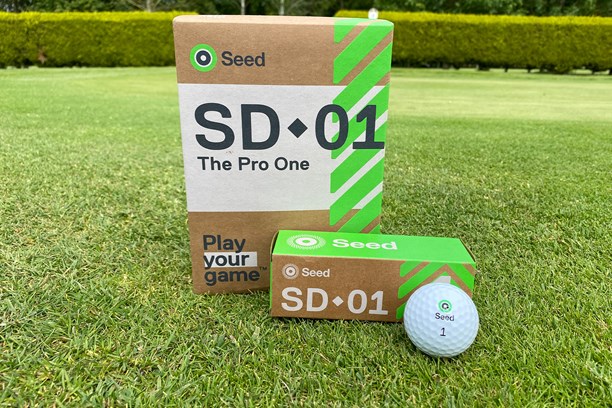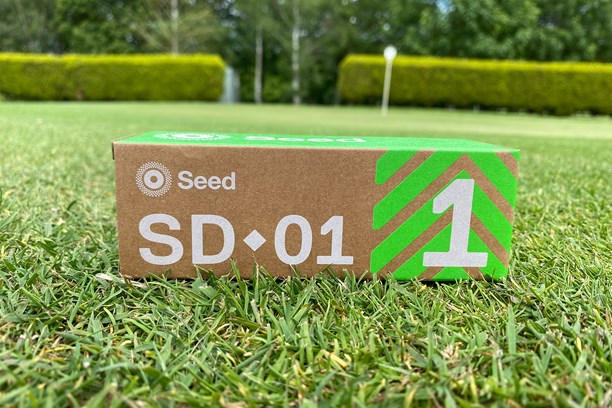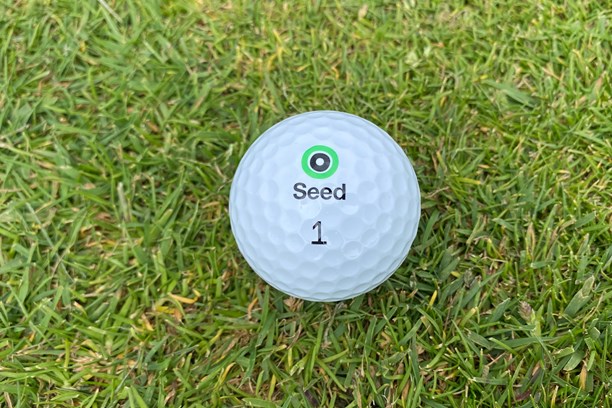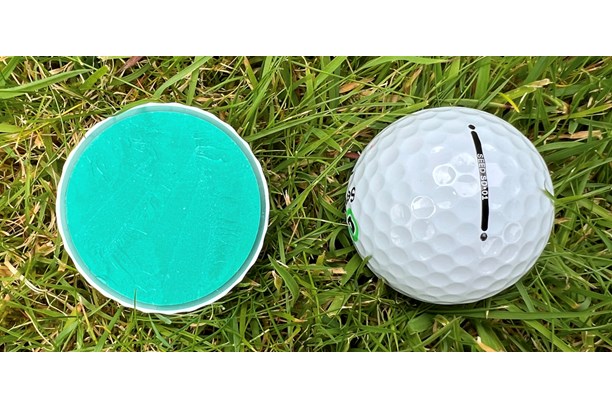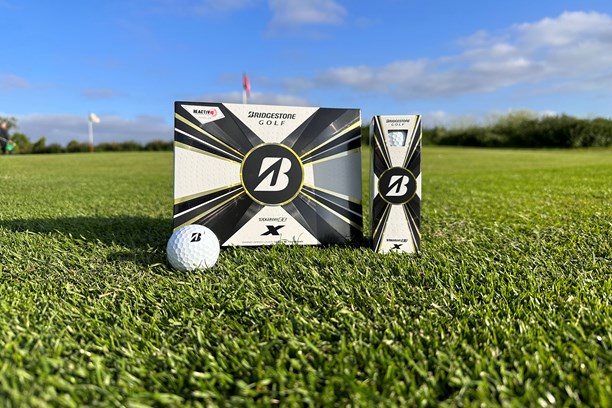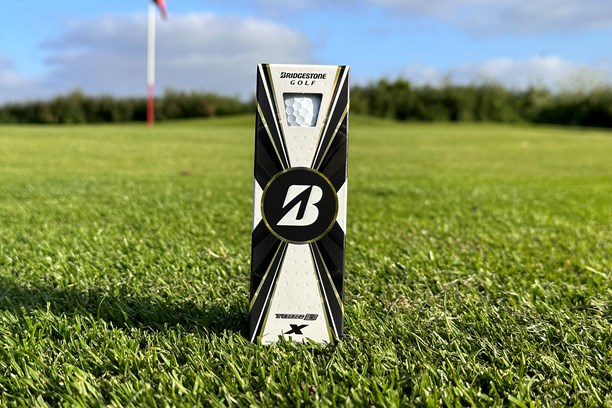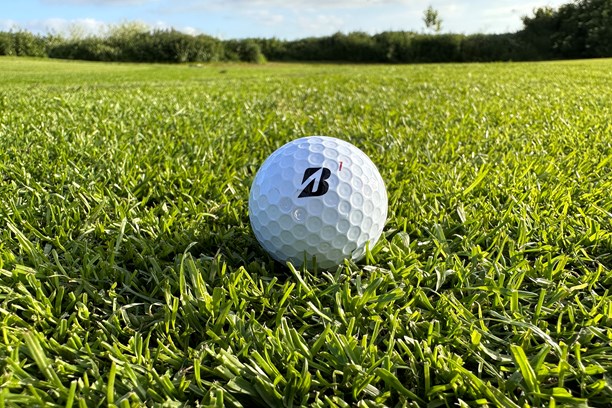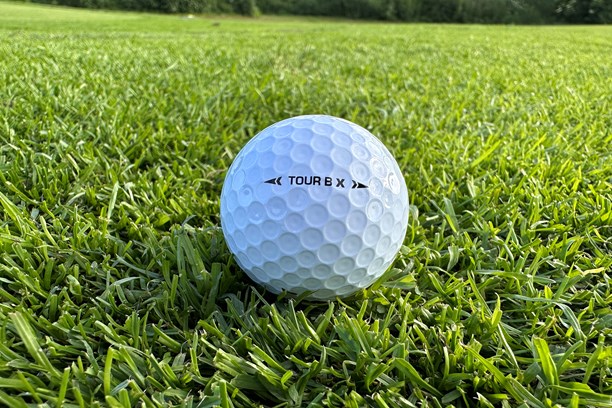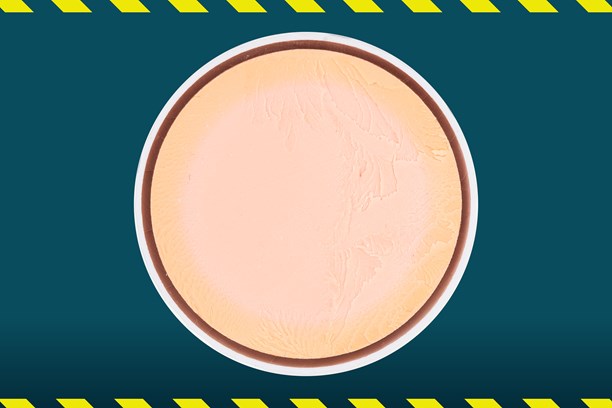The best golf ball to help you hit a lower ball flight: Seed SD-X1 The Pro X1 Golf Ball Review
Last updated:
-
At a glance
- TG Rating
- Owner Rating
-
Pros
- More durable than the previous model
- Good distance throughout the bag
- Impressive grab on approach shots
- Very responsive feedback
-
Cons
- Low ball flight can hinder distance if you don't hit the ball high enough to start with
- Harder to generate spin off the tee than other Seed golf balls because it launches lower
What we say...
Seed’s low launching and penetrating golf ball challenges the most favored golf balls played on Tour based on our robot test results
Seed has an impressive line-up of five high-quality golf balls. Their SD-X1 is their lowest-launching and most-penetrating option. Seed might not necessarily be a name that springs to mind when you’re thinking of the best golf balls, but I’m going to tell you why it should be.
One thing you’re guaranteed from any Seed product is brilliant value. Specifically, with the SD-X1, you’re investing in a premium golf ball at the price the big brands charge for their golf balls for beginners and high-handicappers.
The SD-X1 won’t appeal to a wide range of golfers because of the low-flight properties but for those golfers that will benefit from lowering ball flight you have to consider this golf ball.
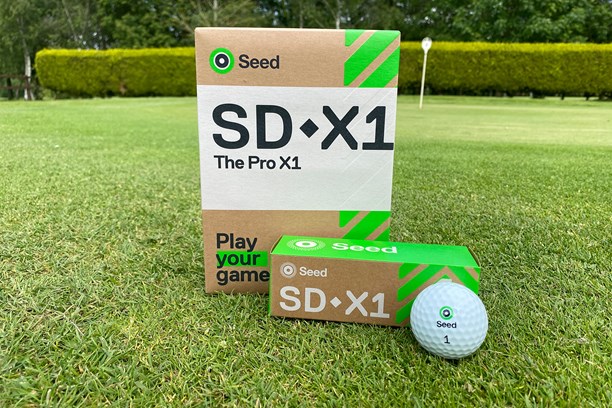

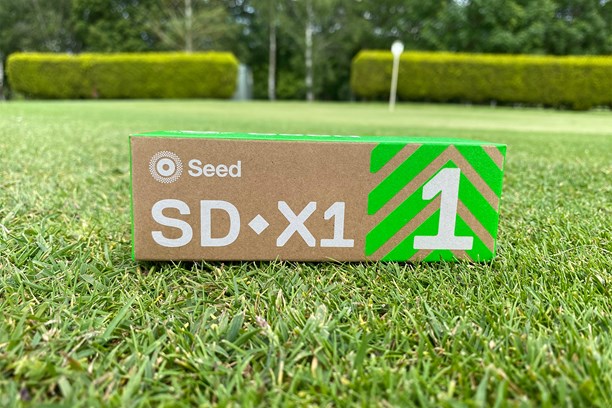
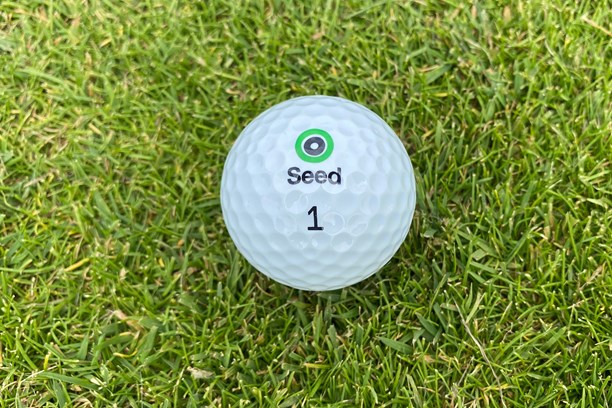
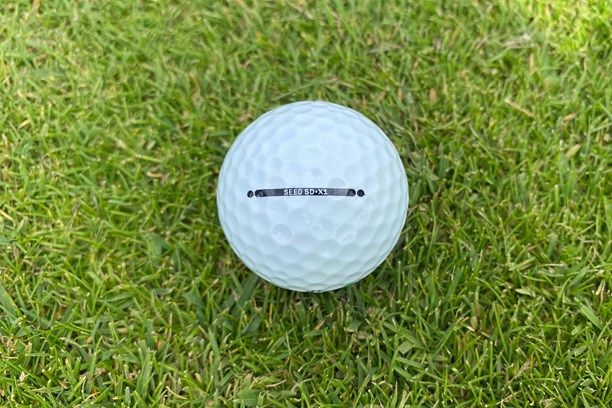
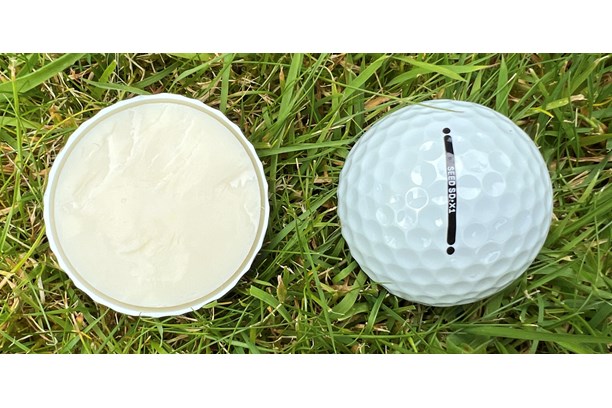
Pros
- More durable than the previous model
- Good distance throughout the bag
- Impressive grab on approach shots
- Very responsive feedback
Cons
- Low ball flight can hinder distance if you don't hit the ball high enough to start with
- Harder to generate spin off the tee than other Seed golf balls because it launches lower
| Construction | 3-Piece |
| Cover | Urethane |
| Dimples | 318 |
| Feel | Firm |
| Flight | Low |
| Long game spin | Low-mid |
| Short game spin | High |
| Color options | White |
- High energy rubber core
- Ultra thin DuPont HPF mantle
- Soft cast urethane cover
If you’ve ever played with this golf ball or if you decide to, you might think that 3.5 out of 5 is harsh, and you could be right. However, I’m going to give my reasoning for this score below.
Versatility
Seeing as though I ranked this the lowest score out of five I thought it would be a good place to start. The reason I only gave the SD-X1 a rating of 2.5 is because I don’t think this is a suitable golf ball for a wide range of golfers.
I definitely wouldn’t say this challenges the best golf balls for slow swing speeds neither would I say it challenges the best low-spin golf balls despite it being a low-launching golf ball with a penetrating ball flight.

The SD-X1 was one of three Seed golf balls we tested in our 2024 golf ball robot test and it performed well, it didn’t blow us away but it didn’t disappoint either. At an 85mph driver swing speed, the SD-X1 was the worst-performing Seed golf ball giving up nearly three yards to the SD-01 and SD-02 and its shot area was nearly double. Hence, why I think this isn’t a ball to consider if your driver swing speed is slower than 100mph.
Although the SD-X1 is designed to deliver a low and penetrating ball flight it isn’t necessarily low spinning off the tee and it generates more spin on approach shots than the SD-01 and SD-02 (as the results from our robot test show), therefore I wouldn’t suggest it if you want a low-spinning golf ball because you aren’t guaranteed low spin.
Some golfers will find the SD-X1 works well for them if they hit a towering ball and they want to bring the flight down. I’ve played with this golf ball on the course and I couldn’t make it work for the life of me, I switched to the SD-02 and saw instant improvement. In no way am I saying that makes this a bad ball, I’m highlighting the importance of finding the best golf ball for you.
Durability
Now I want to turn your attention to the durability of the SD-X1 which is much better than the previous model. In the past Seed faced criticism for the durability of their golf balls, however, I can’t see how anyone could complain about the durability of the new SD-X1.
I’ve played a couple of rounds with the SD-X1 at my home course, Cleveland Golf Club, which is a links course, so other than having to navigate bunkers there aren’t too many obstacles to contend with that can really scuff your golf ball.

Saying that, I did manage to find the cart path twice when I last played and obviously that managed to scuff both balls which is completely understandable. Other than those two instances, I didn’t see one blemish appear on any of the SD-X1 golf balls I played with on the course.
I also spent some time at the short game area testing out the SD-X1 and I would say they held up as expected. Once I started playing shots out of the bunker a few small scuffs began to appear but playing from the short stuff the SD-X1 showed no signs of wear.
Tee to Green Performance
For the right golfer, they could easily score this a 5 out of 5, but for me, I wasn’t able to unlock the true potential of this golf ball and I don’t feel as though there will be many golfers who’d get on better with the SD-X1 than they would with either the SD-01 or SD-02.
A low ball flight isn’t massively desirable for most golfers. You might find it strange considering I play links golf that I don’t want a ball with a penetrating ball flight but it’s just not something I look for in a golf ball. Because of the low flight, I don’t enjoy the way this ball travels off the tee – but you might think otherwise if you give them a go.

I was pleased with how the SD-X1 performed on approach shots. I felt as though it grabbed well on longer approach shots with irons and playing around the greens I had enough spin and control to take the flag on.
I would say the biggest positive with tee to green performance is the SD-X1s ability to generate spin and its biggest hindrance is its low launch properties.
Feel and Response
I can’t criticize the feel and response of the SD-X1 one bit. I’m a massive fan of how Seed golf balls feel off the club face because of how responsive they are. Throughout the bag you get a pleasant feeling whether you prefer soft or firm-feeling golf balls.
I was very impressed with the roll of the SD-X1 on the putting surface too. Considering the greens at Cleveland had been hollow tined not long before I tested these golf balls on-course the ball rolled incredibly well and true off the putter face.
Before I leave you with my final verdict of the SD-X1, here is the robot test data and verdict for you to take a look at.
Robot test data and verdict: Seed SD-X1
| Driver 85mph Swing | Seed SD-X1 |
| Ball speed (MPH) / Launch angle (º) | 123.3 / 12.9 |
| Backspin (RPM) | 2,707 |
| Carry (YDS) | 188.9 |
| Driver 100mph Swing | |
| Ball speed (MPH) / Launch angle (º) | 144.1 / 13.1 |
| Backspin (RPM) | 2,675 |
| Carry (YDS) | 241.7 |
| Driver 115mph Swing | |
| Ball speed (MPH) / Launch angle (º) | 164.7 / 11.3 |
| Backspin (RPM) | 2,124 |
| Carry (YDS) | 277 |
| 7-Iron | |
| Ball speed (MPH) / Launch angle (º) | 107.1 / 20.4 |
| Backspin (RPM) | 5,771 |
| Height (YDS) | 31.1 |
| Descent angle (º) | 44.7 |
| Carry (YDS) | 151.3 |
| Wedge | |
| Backspin (RPM) | 7,692 |
| Shot area (SQ YDS) | 4.6 |
| Carry (YDS) | 105.2 |
| Average Shot Area | |
| Averaged over driver, 7-iron and PW | 19.3 SQ YDS |
VERDICT: Seed SD-X1 The Pro X1
Don’t be put off by Seed’s array of different urethane cover golf balls that on the surface can appear a little confusing as there’s a degree of overlap between the models. Our data spells out really clearly that the SD-X1 is the right ball for you if you’re a slightly higher-speed player (so you’re less concerned about distance) who wants to focus on wedge and iron spin much more so than raw distance.

At all three driver speeds Seed’s SD-01 is a longer ball choice, and with the 7-iron the SD-X1 gives up 4.5 yds of carry distance, which to many will be half a club on approaches into the green. But for that distance trade-off, you get 457 rpm more iron spin and 417 rpm more wedge-stopping power, which some golfers will really appreciate.
Compared to the Titleist Pro V1 our data has the SD-X1 down as offering more wedge and iron spin, which should be serious food for thought.
Final Verdict
Although the SD-X1 has received a rating of 3.5, it isn’t a bad golf ball by any stretch – it just isn’t my cup of tea. What playing with the SD-X1 has highlighted to me is the importance of finding the best golf ball for your game. I switched from this ball to the SD-02 at one point during a round and instantly saw my game improve.
Now, you might think the SD-X1 will work for you, and I wouldn’t talk you out of trying it because as our robot test results show it is a very good golf ball, it’s just not as versatile as other Seed golf balls or golf balls of a similar ilk.
If you are thinking of trying a low-flying and low-launching golf ball then I would definitely recommend testing the water with the SD-X1 because it’s better value than any other golf ball with similar properties.
Alternative options
About the author

James Hogg – Golf Equipment Writer
James has a degree in English Language from Newcastle University and an MA in Journalism from Kingston University.
He spent seven years working for American Golf as part of the sales and fitting team alongside his studies and is a specialist in putters, golf balls, and apparel.
James took up golf as a teenager and, thanks largely to his length and consistency off the tee, he plays off a handicap of 4.7 at Cleveland Golf Club.
You can contact James via email for loads more golf equipment insight.
